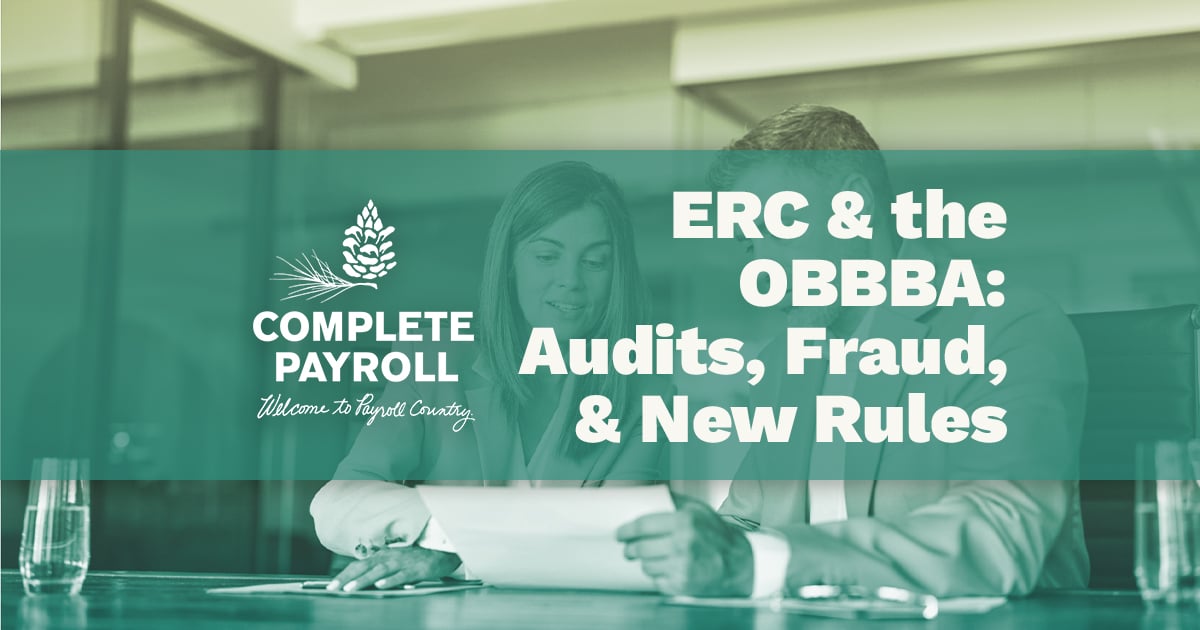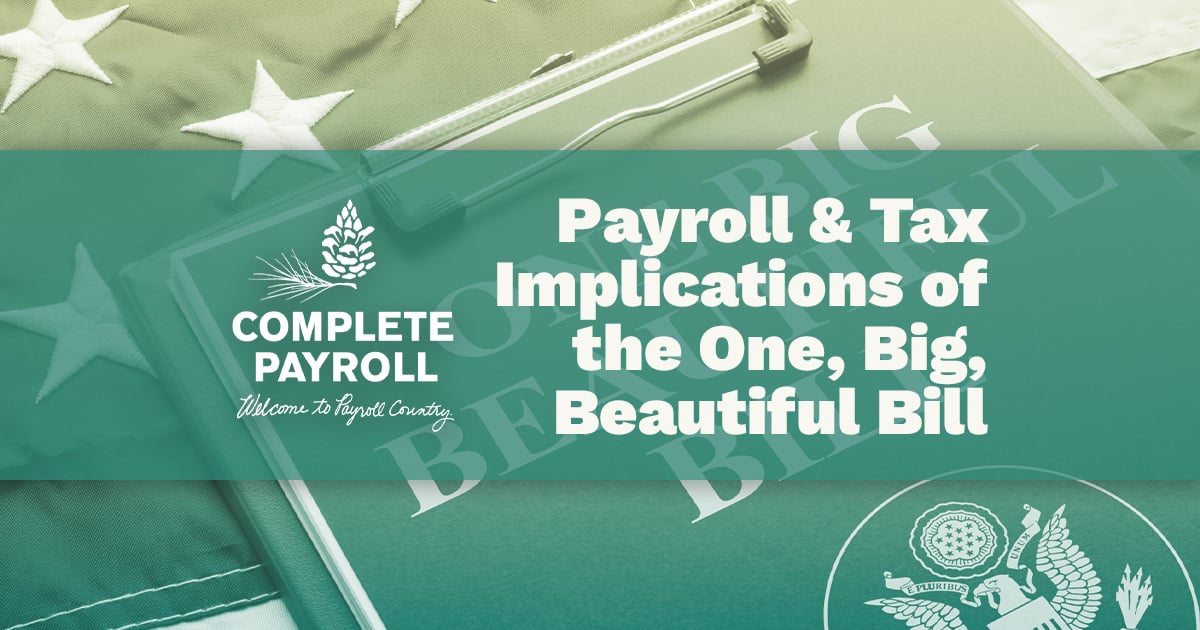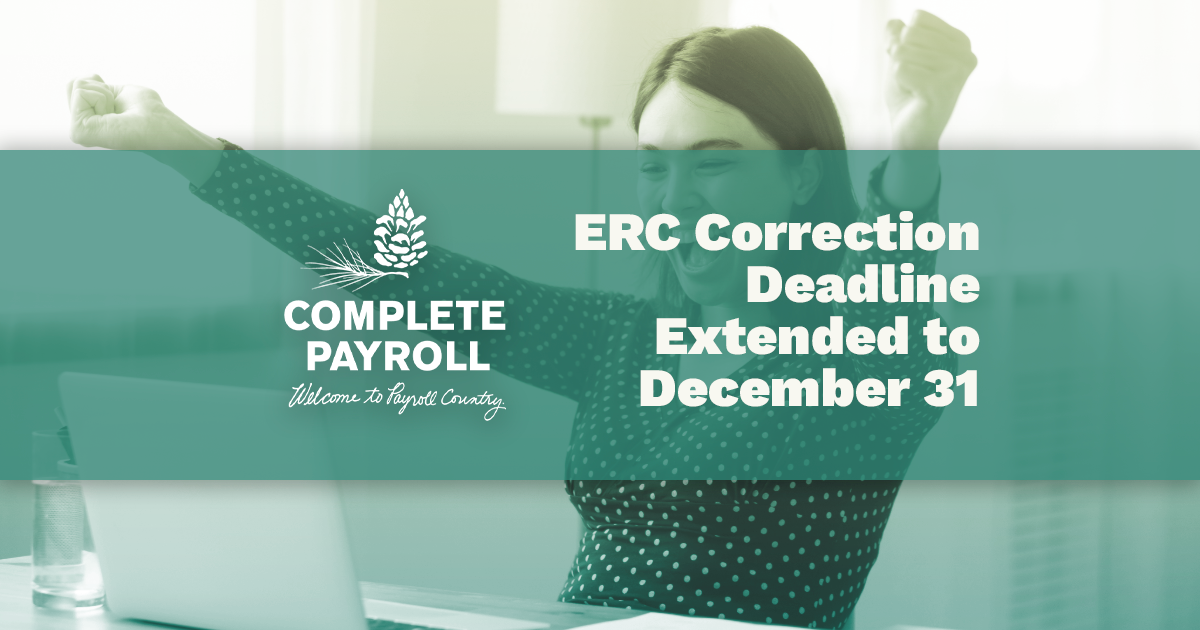IRS Advances ERC Processing & New Third-Party Payer Option for Small Businesses
Written by Rick Fish, Jr., C.P.P.

Are you one of the millions of businesses that applied for the Employee Retention Credit (ERC)? The Employee Retention Credit is a refundable tax credit available for certain eligible businesses that retained their employees despite being affected by the COVID-19 pandemic. The goal of this tax credit was to help give back to businesses by rewarding them for keeping their employees on payroll and paying them qualifying wages between March 12, 2020, and before January 1, 2022.
Unfortunately, there has been a lot of fraud surrounding ERC claims, resulting in the Employee Retention Credit processing being significantly slowed over the past couple of years. However, the IRS has recently implemented new processes to prevent fraud and help speed up the Employee Retention Credit processing. In addition, they have also implemented a new third-party payer option to help resolve improper ERC claims.
In this blog, we will be discussing the latest IRS ERC updates, what you should be aware of regarding ERC eligibility, and how both employers and third-party payers can amend ERC claims if needed.
Key IRS Advancements in ERC Processing
While the IRS has already processed millions of ERC claims, the IRS is still working on processing around 400,000 claims regarding the 2021 eligible quarters—with potentially 10 billion in tax credits. This process will continue until the end of the first quarter of 2025. While there was a moratorium for a while last year on processing new ERC claims in an effort to detect fraud on previous claims, this year in September 2024 the IRS announced significant advances in processing new claims. This is a big step and very important for eligible small businesses for whom the tax credit will greatly benefit.
IRS Commissioner Danny Werfel has recently remarked that “The IRS understands the vital importance of Employee Retention Credits payments for struggling small businesses, and we are continuing to make important progress.” He additionally stated, "In recent weeks, the IRS has made substantial progress in separating eligible claims from the wave of ineligible claims that have come in, and we continue working to refine our models to identify more eligible claims.” He also stated that the IRS is working “diligently to process ERC claims as quickly as possible.”
If your business is waiting on Employee Retention Credit processing, be on the lookout over the next few weeks and months as ERC checks are being mailed to eligible claimants with refunds.
New Third-Party Payer Option
With the latest IRS ERC updates in Employee Retention Credit processing, the IRS has opened a supplemental claim process to help third-party payers and their clients resolve incorrect ERC claims. A third-party payer is those who report and pay clients’ federal employment taxes under the third-party payer’s Employer Identification Number (EIN) and handle clients’ payroll and tax reporting duties.
This effort is to speed up third-party payroll processing by allowing the third-party payers to resolve incorrect ERC claims. If a client has come to determine they are ineligible for the ERC and amend their claim, it is the third-party payer that needs to amend it, not the employer. In case a third-party payer has filed claims on behalf of multiple clients and has since realized the ineligibility of certain claims, then this claim process allows for third-party payers to withdraw certain clients’ claims while still retaining the claims of valid clients.
In order to correct or consolidate a previously filed ERC claim, third-party payers will have to submit a supplemental claim. This new third-party payroll processing option is a helpful effort to easily correct ineligible claims, which allows for eligible claims to be processed more swiftly.
Increased Scrutiny of Improper Claims
As there have already been over 1 million fraudulent ERC claims detected, the IRS ERC updates include strengthening its efforts in validating claims and denying improper ERC claims. They are doing this by intensifying audits, increasing fraud investigations, and pursuing civil and criminal investigations of potential fraudulent claims. This includes fraudulent claims that were filed either purposefully or accidentally. Unfortunately, many third-party aggressive marketers encourage employers to file for the ERC without the employer fully understanding the eligibility requirements, leading to many ineligible and fraudulent claims.
So, what does this mean for employers? This means that all businesses that have filed and received an ERC payment should re-examine eligibility requirements to ensure they received this tax credit lawfully. If you have received an ERC payment wrongfully, your next step should be to correct your claim through the ERC Voluntary Disclosure Program to avoid penalties and other action.
ERC Voluntary Disclosure Program (VDP)
The ERC Voluntary Disclosure Program (VDP) is a program the IRS created for ineligible employers who claimed and received the ERC and need to repay it. While the initial ERC Voluntary Disclosure Program ended awhile ago, a second VDP has now been launched by the IRS, which allows employers to apply voluntarily to reduce penalties by correcting their ERC payments. The second ERC Voluntary Disclosure Program is open through November 22, 2024, for 2021 tax periods only.
Benefits of applying for the second ERC Voluntary Disclosure Program:
- By applying for the VDP, employers will only need to repay 85% of the ERC they received.
- Employers will not have to repay any interest they received on their ERC refund.
- Income tax returns will not have to be amended to reduce wage expenses.
- The 15% employers may retain is not taxable income.
- The IRS will not charge penalties or interest on the claimed ERC amount if it is paid in full (minus 15%) by the time their signed closing agreement is sent to the IRS.
- The IRS will not audit the ERC on your employment tax return for tax period(s) resolved within the terms of the second VDP.
Essentially, the ERC Voluntary Disclosure Program is an amazing opportunity for employers to correct their inaccurately received ERC tax credit while avoiding several penalties and disadvantages that they would otherwise face if the IRS deemed their ERC claim fraudulent.
Why Timely Action Is Crucial
If you have filed an ERC claim and are either waiting for it to be processed or already have received it, both employers and third-party payers should review their claims to ensure eligibility. If you discover you are not eligible to receive this credit, then you should take the necessary action and fill out an ERC Voluntary Disclosure Program application as soon as possible to avoid any penalties.
The second Voluntary Disclosure Program is open until 11:59 PM on November 22, 2024, for 2021 tax periods only.
If an employer is working with a third-party payer or payroll provider that is managing your ERC claim, then it is the third-party payer’s responsibility to make any corrections or amendments necessary to their clients’ ERC claims. The new third-party payroll processing option allows for third-party payers to correct certain ineligible ERC claims without withdrawing other eligible claims.
Conclusion
The IRS ERC updates on Employee Retention Credit processing are very important and provide support for small businesses. These advancements include a second ERC Voluntary Disclosure Program, third-party payroll processing amendments, and the expeditement of processing ERC claims for eligible 2021 quarters. In addition, they are also tightening their scrutiny on improper ERC claims and launching criminal investigations for fraudulent ERC claims. Employers and third-party payers should carefully review all ERC claims to ensure they meet the eligibility requirements.
To help ensure accuracy, contact Complete Payroll to help with your Employee Retention Credit processing, and download our ERC guide to help you navigate your ERC claim!















 Get Instant Blog Notifications
Get Instant Blog Notifications


